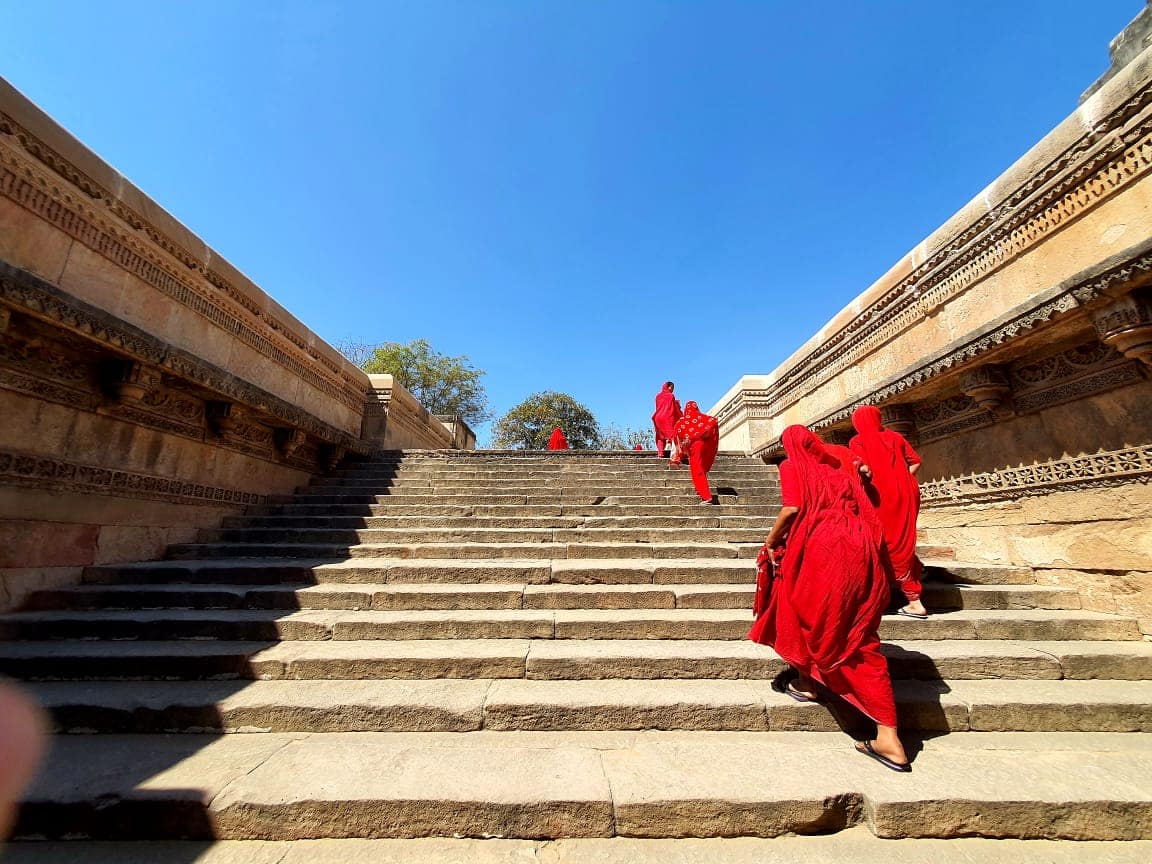
I was in Ahmedabad last month to see the 4th Test Match between England and India. England’s abysmal performance against the Indian spinners brought the match to an early conclusion, inside of three days. This fortuitous turn of events allowed me a spot of local sightseeing, and led me to a small village called Adalaj.

Adalaj is home to one of the finest stepwells in India. So, what exactly is a stepwell? Open stepwells are essentially uncovered stepped ponds, built in semi-arid regions of western India to collect rainwater (and groundwater) for a temple or community. While most of the structures are utilitarian in construction some of them have architectural embellishments that can rival any palace or public memorial.

In Gujarat these ponds or tanks care called vav or baoli, as in Adalaj Ni Vav. Probably, the baths of Mohenjo-daro and Harappa are their true predecessors. Their original purpose was to be a perennial source of water for drinking, washing and bathing. Over time they gravitated to village gathering place, festival venue, or caravanserais along trade routes. Still later, they became objects of benefaction, made by the rich for the poor, to wash away sins, or balance the karmic ledger, or even buy immortality. That’s when function turned to privilege and utilitarian turned to flamboyant.

The Adalaj structure is dug five storeys deep, intricately carved and trellis ornamented at every level, with oriel windows, light and air vents, resting rooms and open-to-sky octagonal well shaft. Though built in the Solanki style of architecture, Islamic floral motifs blend with Hindu and Jain symbolisms, and scenes from everyday life are carved on the walls.

The legend of this tale is fascinating. The Hindu ruler of Dandai Desh, Veer Singh, began the construction of the stepwell in 1499 AD. He died in battle, when attacked by the neighbouring Muslim ruler, Mohammed Begda. The dowager, the beautiful Rani Roopba (Rudabai), was committed to Sati, but love-besotted Begda proposed marriage. She agreed, conditional upon the stepwell’s completion. Once that was achieved Rani Roopba jumped into the well. The Adalaj is also known as the Rudabai Stepwell.
































